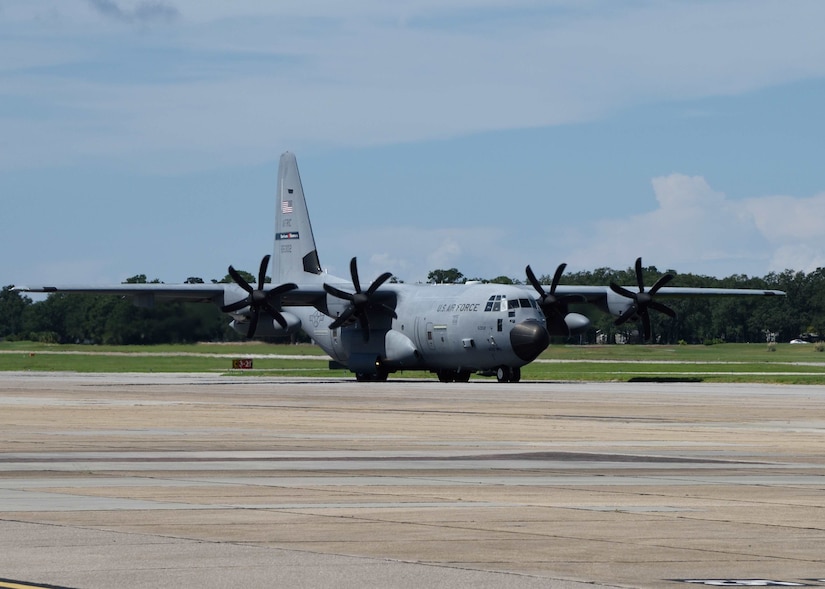By Air Force Lt. Col. Marnee L.C. Losurdo, 403rd Wing
KEESLER AIR FORCE BASE, Miss. -- The Air Force Reserve's
53rd Weather Reconnaissance Squadron based here is flying missions over the
Atlantic Ocean this week to monitor Hurricane Florence.
The 53rd WRS is the only Defense Department unit that flies
reconnaissance missions into severe tropical weather during the hurricane
season, June 1 through Nov. 30, to gather data for the National Hurricane
Center to improve the center's forecasts and storm warnings.
The Hurricane Hunters' first mission into Florence was
Monday evening. The Hurricane Hunters departed here Sept. 9 to operate out of
Savannah/Hilton Head International Airport, Georgia, for Florence
reconnaissance. Florence became a hurricane Sept. 9 and will impact the
Carolinas and Virginia late Thursday and into Friday, according to the NHC.
The Hurricane Hunters have completed two missions into
Florence, now a Category 4 storm -- including one today -- with three more
missions already tasked and two more possible, said Air Force Lt. Col. Thomas
Moffatt, a navigator for the 53rd WRS.
Lifesaving Data
Oceans are data-sparse environments, due to the lack of
radar and weather balloons over those areas. And satellite data can be
incomplete, so the data the Hurricane Hunters provide is vital, potentially
saving lives and property, said Air Force Maj. Jeremy DeHart, 53rd WRS aerial
reconnaissance weather officer.
During a hurricane, crews fly through the storms at 5,000 to
10,000 feet above sea level, flying through the eye of a storm four to six
times to locate the low-pressure center and circulation. During each pass
through the center, they release a dropsonde, an expendable weather
reconnaissance device that collects weather data such as surface winds and
pressure on its descent to the ocean surface.
Each crew has a loadmaster that drops an average of 8 to 12
dropsondes while in flight, depending on how many times the mission flies
through the center of the storm, said Air Force 1st Lt. Garrett Black, 53rd WRS
aerial reconnaissance weather officer. Ten devices were dropped on the most
recent flight. It takes about 10 minutes for the collected data to travel from
the dropsonde to the plane to the NHC being 10 minutes.
Working alongside the Navy, which is gathering data showing
the relationship of the ocean temperature and how it can affect storms, are
members of the U.S. Coast Guard Reserve. These members are releasing buoys
called Airborne/Air Expendable Bathytherographs, or AXBTs, which collect data
such as water temperature, said Coast Guard Reserve Chief Petty Officer Steve
Jayne, a maintenance engineer.
Providing this data to the NHC will keep the squadron busy,
especially since September is the peak of the annual hurricane season. Last
year was the 10th busiest season on record, and this month looks to be a busy
one as well.
In addition to monitoring Hurricane Florence, members of the
unit deployed to Hawaii this month to fly reconnaissance missions into
Hurricane Olivia, and today they are tasked to fly a low-level investigation
mission into a disturbance approaching the Gulf of Mexico. Tropical Storm Isaac
and Hurricane Helene are also in the Atlantic, but the squadron is not tasked
to fly those storms.

No comments:
Post a Comment